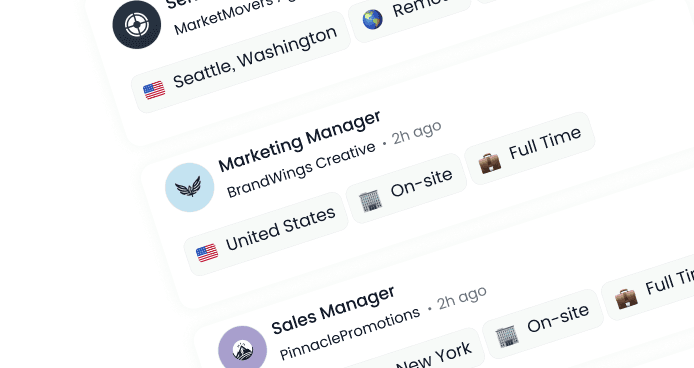How to Deliver a Personalized Candidate Experience in 2025
Published:
September 11, 2025
All
Candidate Experience
Employer Branding
AI Recruitment
Recruiting Tips
Workforce Planning
Recruitment has gone digital — but personalization is what keeps candidates engaged in 2025.
Introduction
Recruitment and the hiring game are changing globally, and AI has become a key catalyst of this evolution. However, with every change there is always a downside, and the major one is the loss of human touch in the recruitment process. The fact is, in this day and age, where companies are looking for the best human resources, personalization and empathy are essential; they’re not an option, they’re an expectation.
To further support this, a study late last year found that job seekers are more likely to try for a company when job recommendations and communication feel tailored to them. As AI and automation take center stage globally, the organizations that take the initiative in offering a personalized candidate experience will more likely achieve greater success in hiring the top-tier talent.
That brings us to how recruitment and hiring managers can focus on personalization at scale while ensuring empathy and fairness, so without further ado, let’s begin.
Understanding the Importance of Personalization
They say change is the only constant, and it’s not just with organizations; people’s expectations change as well. The fact of the matter is the one-size-fits-all hiring solutions will not land you the cream of the crop. To put it right out there, top-tier candidates expect the same level of customization they get from streaming sites such as Spotify or Netflix, but instead it’s what they want with regard to their careers.
A personalized candidate experience:
Makes candidates feel seen and respected,
boosts employer branding,
not to mention acceptance rates are better,
and also results in a shorter time-to-hire and a reduction in candidates leaving.
When implemented correctly, personalization is like feeding two birds with one scone—it is the ideal way to humanize the hiring process and strengthen your employer branding. Now let’s move on to practical steps you can take to achieve your recruitment personalization goals.
Step 1: Acquire Candidate-Centric Data
They say the best way to understand someone is to first listen, so it shouldn’t come as a surprise when we say that the best personalization begins with it. Start acquiring meaningful data from the get-go; ask about and verify the candidate’s work values, which communication style they prefer, their career goals, and if they have any location preferences. This can be done through:
Smart forms during application.
Conversational chatbots.
Video resume introductions.
To put this into perspective, an example would be companies like DigitalHire that utilize video resumes and AI to ensure candidates not only get a chance to showcase their skills but also their personality and potential.
Step 2: Ensure the Human Touch in Outreach and Communication
If you're still using "Dear Candidate," you're doing it wrong, and let us tell you, most companies do not focus on this as much as they should.
Here are recruitment personalization tips that work:
Use candidates' names in every message.
Reference their background or resume highlights.
Be open to and offer time-zone and preference-based scheduling options,
and share team videos, office culture previews, and other relevant content.
It is alright to use AI virtual agents or similar automation for efficiency and scaling; however, it is imperative that the tone feel human.
Step 3: Ensure the Interview and Feedback Processes are Customized
An essential part of improving the candidate journey is understanding the importance of and respecting the time and individuality of a potential hiree.
In order to ensure the above, you can:
Offer asynchronous video interviews that allow flexibility.
Let candidates pick interviewers when possible (e.g., peer vs. manager).
Provide personalized prep materials based on the job they applied for.
Even rejections can be personalized, and they should be. In fact, there are platforms out there that allow hiring managers to send personalized rejection videos or written notes that are empathetic and don't feel robotic or pre-written.
Step 4: Map the End-to-End Journey
You can’t improve what you can’t see. Building a candidate journey map helps visualize pain points and moments of delight across every stage: attraction, application, interviews, and offer.
By using a feedback loop, ask candidates about their experience after each touchpoint. Use that data to refine your personalization strategy. If done properly, mapping journeys can help increase trust and lead to better candidate satisfaction scores which equals better employer branding.
Step 5: Use Video to Reintroduce Humanity
In a digital-first hiring world, face time still matters. That’s why video resumes and video job descriptions are becoming go-to tools to humanize the hiring process. They allow candidates to:
Show personality beyond a PDF.
Build emotional connection with hiring managers.
Communicate enthusiasm, empathy, and presence.
Employers, too, can showcase their culture through short intro videos embedded in job listings.
Step 6: Audit for Fairness and Bias
Personalization must be ethical. AI tools can sometimes reinforce bias if not properly monitored. For example, a study from the Australian Human Rights Commission found that AI interview tools misinterpreted speech patterns from non-native English speakers up to 22% more often, potentially leading to unfair screening outcomes.
To protect fairness:
Regularly audit AI-driven decisions.
Include diverse hiring panels.
Maintain human oversight in critical decisions like shortlisting and rejection.
Step 7: Scale Without Losing Empathy
You don’t need a massive HR team to deliver personalization. With smart tools and process design, even small startups can tailor candidate journeys.
The way to go can be:
Use templates, but customize intros and closings.
Schedule check-ins or updates (even if automated).
Send thank-you notes with real feedback.
Follow up with rejected candidates for future opportunities.
Recruitment personalization tips aren’t about complexity—they’re about care, timing, and intention.
In Conclusion—Personalization is the New Standard
You’re not just hiring a resume. You’re engaging a person—with goals, anxieties, and dreams. Delivering a personalized candidate experience helps you stand out, hire better, and build stronger employer brand equity.
It’s not about faking human connection through automation. It’s about using tech to make that connection more scalable and meaningful.
Ready to Personalize at Every Step?
Discover how DigitalHire helps you personalize your hiring process without losing the human touch. From video resumes to AI screening assistants, the platform empowers you to deliver tailored, thoughtful candidate journeys—at scale.
Don’t just screen candidates. Connect with them.
FREE JOB POST
Looking to fill a position quickly? Post your job for free and reach top talent today!




